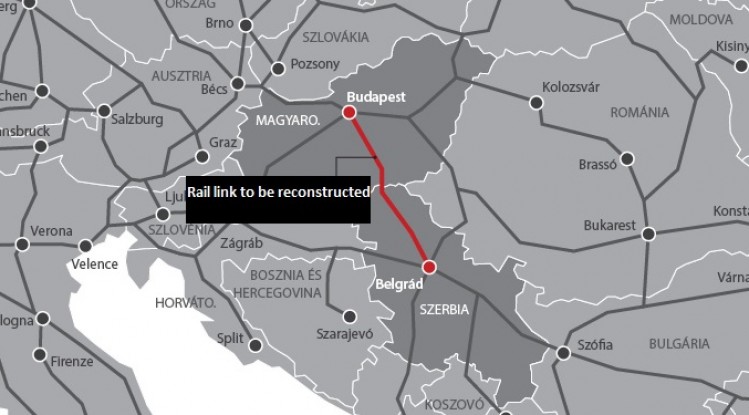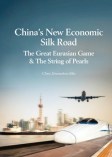EU Investment Tender Compliance Regulations Hinder China at Budapest CEEC Gathering

The Chinese invested Belgrade-Budapest Rail Route
China has received a reality check over the progress of investment into the European 16+1 initiative it has instigated, officially known as the Co-Operation Between China and Central and Eastern European Countries (CEEC). The initiative, which was created in 2012 and includes Albania, Bulgaria, Croatia, the Czech Republic, Hungary, Poland, Romania, the Slovak Republic, Slovenia, and the three Baltic States: Estonia, Latvia and Lithuania, has never sat that easily with the European Union headquarters in Brussels responsible for regulating the activities of the CEEC EU members.
Yesterdays 2017 CEEC conference in Budapest highlighted areas of concern, even with Chinese Premier Le Kejiang in attendance. The main crux of the issues impacting Chinese investment into much, but not all, of the 16+1 has been EU regulatory policy. This has noticeably slowed down investment into the EU nations concerned. Tamas Matura, an assistant professor at Budapest’s Corvinus University said that “Chinese investment in EU members of the 16+1 has remained limited. Some countries have not received any new major Chinese investors in the last five years. China has had more success in Western Balkan countries like Serbia, Montenegro and Bosnia and Herzegovina, where EU funds are not available and EU regulations are not applicable.”
Serbia is indeed a case in point. While not part of the 16+1 grouping,.the country is the Balkans largest beneficiary of Chinese investment. Chinese businesses have invested in local factories and provided financing for roads, bridges, energy projects and railways. In fact, the largest project discussed in Budapest is the Belgrade-Budapest high-speed rail link, with construction work on the Serbian stretch expected due to begin next month. The modernized railway would enable Chinese goods coming through Greek ports to transit quickly from Serbia into the EU. Currently, the rail journey between the Belgrade and Budapest takes eight hours. The planned route would allow passengers and cargo to travel up to 200 kilometers per hour, cutting travel time to less than three hours.
Progress on the project however has been slow due to EU regulatory compliance issues on the EU portion of the route. The Export-Import Bank of China is expected to lend about 85% of the total funds for the €2.4 billion-project, with the rest having been raised from Russian sources. An agreement between China and Hungary over the railway raised concerns within the European Commission earlier this year that the planned tender process may not be in compliance with EU rules.
Brussels has raised concerns about the project in the past and is keen to ensure both China and EU members states such as Hungary obey EU laws, an issue that is caused tensions between Brussels and Budapest and Beijing. Discussing the Belgrade-Budapest rail project earlier in the year, an EU statement read “The EU welcomes investment — whether domestic or foreign — as long as it is compatible with EU law. It is standard practice for the Commission’s services to assess the compliance of major public contracts with EU law. Against that backdrop, a dialogue with the Hungarian authorities, at technical level, is ongoing in order to seek some clarifications.”
The issue for China is that much of the work and investment is expected to come from Chinese firms tendering for the project, including Chinese contractors and workers. Budapest wants the investment and the infrastructure development. Both see Brussels of getting in the way of progress; especially so as the project funding is not from EU sources.
Chris Devonshire-Ellis of Dezan Shira & Associates states “These types of frustrations are going to crop up whenever there are cross-border investments that impact upon EU and non-EU projects. A solution maybe to classify certain categories of these as ‘special cases’ and subject to arbitration by a separate panel whose members also include the investors, the host countries, and the EU. Clearly EU regulations concerning compliance and tendering were not designed to cater for cross-border projects and this needs to be addressed. Situations such as the Belgrade-Budapest rail project will only become more common in future, and especially with both China and the Eurasian Economic Union rubbing up against the EU’s eastern borders. Foreign investors such as the Chinese and Russians should be allowed to at least express their opinion and justifications for alternative tender and project treatment on cross-border projects that include EU members. A different category of regulatory mechanisms would be appropriate.”
About Us
Silk Road Briefing is produced and written by Dezan Shira & Associates. The firm provides governments and corporate businesses worldwide with strategic, legal, tax and operational advisory services to their SMEs and MNCs investing throughout Eurasia and has 28 offices across China, India, Russia and the ASEAN nations, and partner firms in Central Asia. We have specific and long term experience in China and the OBOR countries. For assistance with OBOR related issues, please contact the firm at silkroad@dezshira.com or visit the practice at China Targets, Funds, and Incentivizes Eastern Europe as Bilateral Trade Potential Intensifies
 Related Reading:
Related Reading:
![]() China Targets, Funds, and Incentivizes Eastern Europe as Bilateral Trade Potential Intensifies
China Targets, Funds, and Incentivizes Eastern Europe as Bilateral Trade Potential Intensifies
Silk Road and OBOR Business Intelligence
Dezan Shira & Associates´ Silk Road and OBOR investment brochure offers an introduction to the region and an overview of the services provided by the firm. It is Dezan Shira´s mission to guide investors through the Silk Road´s complex regulatory environment and assist with all aspects of establishing, maintaining and growing business operations in the region.
China’s New Economic Silk Road
This unique and currently only available study into the proposed Silk Road Economic Belt examines the institutional, financial and infrastructure projects that are currently underway and in the planning stage across the entire region. Covering over 60 countries, this book explores the regional reforms, potential problems, opportunities and longer term impact that the Silk Road will have upon Asia, Africa, the Middle East, Europe and the United States.







